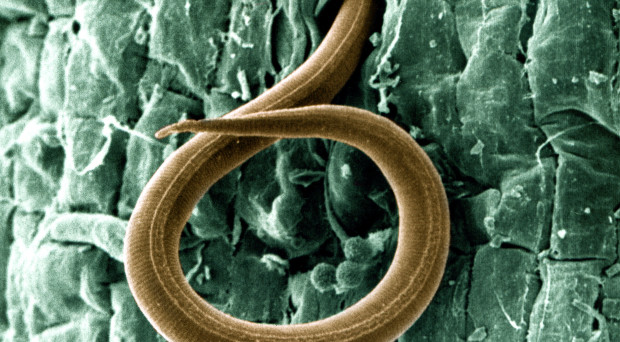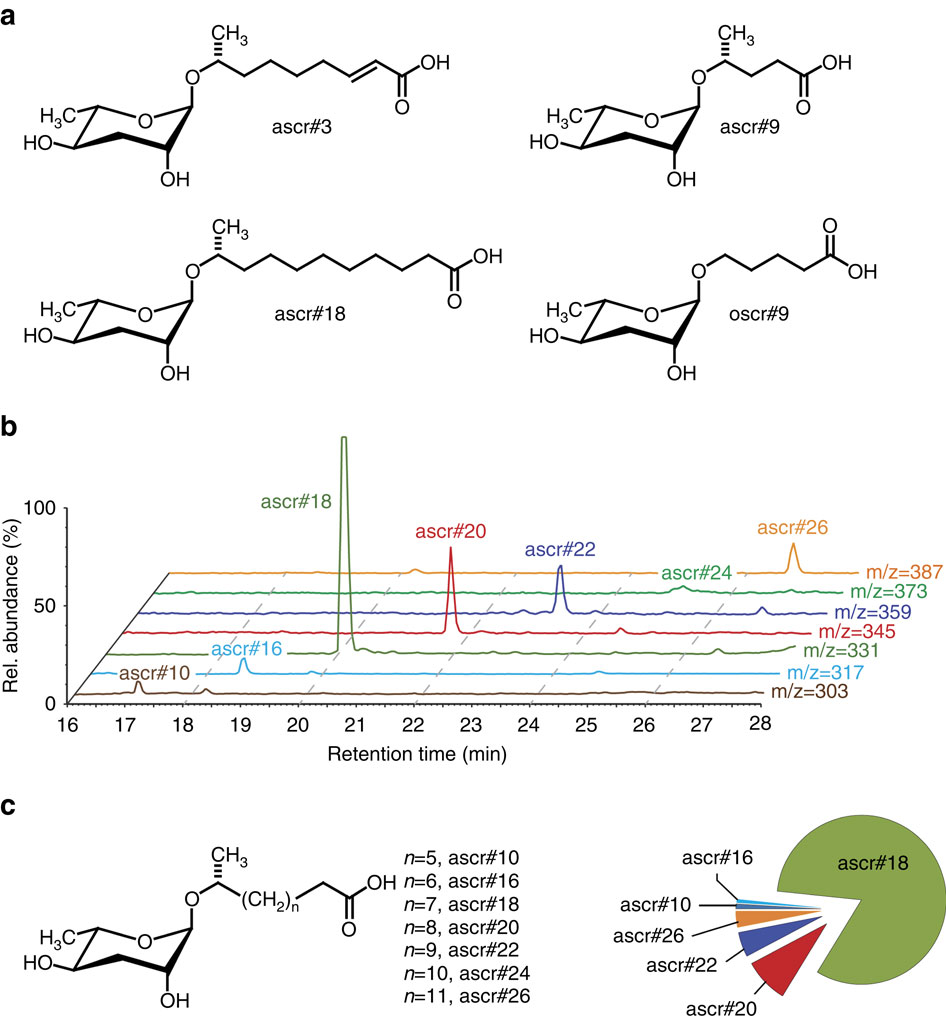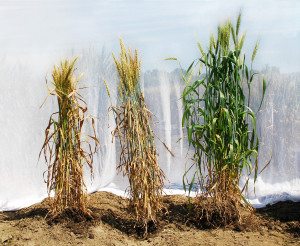
Nematodes, or roundworms, are the most numerous animals on earth, parasitizing most plants and animals. These infections are responsible for many of the most common neglected tropical diseases, causing significant morbidity and mortality. Soil-dwelling nematodes also put food security at risk by attacking agriculturally important plants. While the human response to dealing with parasite infection has been thoroughly researched; it has only recently been discovered that plant-parasitic nematodes not only activate defensive responses in plants, but also provide nematode-mediated immunity to subsequent attack by pathogens and viruses.
Numerous nematodes

Despite more than 4,100 species of plant-parasitic roundworms being identified, two major groups of nematodes are responsible for most agricultural plant damage. The root-knot nematodes, Meloidogyne spp. damage plants by producing galls on roots; whereas, the cyst nematodes, Heterodera and Globodera spp., by the formation of root cysts.
Soil-dwelling nematodes are ubiquitous and rich arable soil may contain up to 3 billion worms per acre. It therefore comes as no surprise that infected crops result in over $100 billion worth of agricultural damage globally per annum. For British crops alone, damage by cyst nematodes, Globodera rostochiensis and G. pallida, account for an estimated £50 million damage each year.

Nematode control therefore is a serious business; however, following the current tightening of legislation, withdrawal from use of inorganic pesticides (the primary source of pest and disease management over the past decades) and a lack of resistant plant varieties, there is an urgent need to understand more about plant natural defenses to promote resistance to nematodes and other invaders.
Plant defenses against pathogens
Plant defenses can be broadly grouped into constitutive (continuous) defenses and inducible defenses. Toxic chemicals or defense-related proteins are typically only produced after pathogens are detected due to the high energy costs associated with their production and maintenance. To allow detection of, and rapid response to, potentially harmful pathogens plants have evolved several layers of highly developed surveillance mechanisms to try and circumvent serious damage.
The first line of defense consists of inducible defenses, which are mounted when plant cells recognize microbe-associated molecular patterns (MAMPs), such as lipopolysaccharides, flagellin, peptidoglycan and other compounds commonly found in microbes. Plant cells then become fortified against attack, conferring protection from the invading pathogen. Although MAMP’s have been well characterized, up until recently, it remained unclear as to whether plants could detect conserved molecular patterns derived from plant-parasitic animals, such as soil-dwelling nematodes.
‘Nematode-associated molecular patterns’
A number of studies have previously shown that, in response to plant-parasitic nematode infection, plants quickly activate defense pathways similar to those induced by other pathogens. Although these findings were very promising, what the nematode-derived signals actually were remained a mystery.
Following the discovery that non-parasitic soil nematodes can also induce plant defenses, a conserved nematode signature molecule appeared to be a likely trigger for activating the plant defense response. Ascarosides are pheromones exclusive to nematodes that are used to regulate development and social behaviours. Ascarosides represent an evolutionarily conserved family of signalling molecules, of which more than 200 different ascaroside structures from over 20 different species have been identified. Due to the highly conserved nature of these molecules, it seemed plausible that plant hosts and nematode-associated microorganisms may have evolved the means to detect and respond to this ancient nematode molecule. A recent study published in Nature Communications investigated whether ascarosides can be detected by plants, and whether detection of the molecules induced the plant-defence response.

Profiles of ascarosides from adult and juvenile stages of a number of agriculturally relevant species of plant-parasitic nematodes were characterised using mass spectrometry (MS) to analyse the metabolome excreted into media supernatant. MS analysis of exo-metabolome samples revealed excretion of similar sets of ascarosides in all analysed species; however, ascr#18 was identified in all plant-parasitic nematodes as the most abundant molecule.
In order to determine whether ascr#18 could be perceived by plants and influence plant-defensive responses to different pathogens, the ascaroside was applied in various concentrations to Arabidopsis roots 24 h prior to leaf innoculation with pathogens. By monitoring expression of MAMP-triggered immunity (MTI) markers and defense-related genes in leaves at different time points after root treatment with ascr#18, characteristic defense responses such as MAMP-triggered immunity were shown to be induced. Interestingly, local and systemic defenses were also shown to be activated by ascr#18 application to leaves.
Detection of ascr#18 by plants increased resistance to viral, bacterial, oomycete, fungal and nematode infections in Arabidopsis, as well as tomato, potato and barley. Additionally, three other ascarosides applied to different plants showed defense responses were induced by structurally diverse ascarosides, but that this varied in a structure- and species-dependent manner.
Conclusions

Plant crops suffer considerable damage every year from parasites and pathogens, putting food security at great risk. The ability to activate plant immune responses as and when required by using signalling molecules, such as ascarosides, is an exciting discovery that could contribute to improving the economic and environmental sustainability of agriculture. One potential application could be spraying of ascr#18 on crop leaves; as although plants primarily encounter ascarosides via their roots, leaf exposure to low ascr#18 concentrations was also effective at inducing the defense responses to confer fortification against attack.

Comments